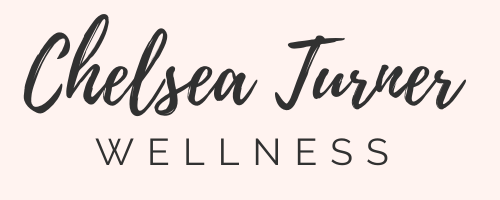The AIP diet is a powerful protocol designed as an intervention for those with autoimmune disease and chronic illness. The Autoimmune Protocol (AIP) is meant to help you lower inflammation and reduce symptoms of autoimmune disease by discovering which foods best support your healing process.
You may be asking yourself: Is the Autoimmune Protocol right for you? What foods can you eat and which foods should you avoid? How should you get started?
I created this complete guide and free printable food list to answer these questions and ensure your success on the Autoimmune Protocol!

What is an autoimmune disease?
Autoimmune disease occurs when the body can’t tell the difference between healthy tissue and foreign invaders. As a result, rather than protect against disease and infection, the body’s immune system begins to attack healthy cells by mistake, causing inflammation in the body.
There are a number of autoimmune diseases. Some of these include – Inflammatory Bowel Disease, Multiple Sclerosis, Rheumatoid Arthritis, Hashimoto Thyroiditis, and more.
What is the AIP diet?
The Autoimmune Protocol (AIP) diet is a food-based approach to reducing inflammation in the body. It works by identifying food triggers and gut irritants that could cause inflammation and instead focuses on nutrient density to promote healing.
It consists of two phases – elimination and reintroduction. During the elimination phase, certain foods, gut irritants and immune stimulants are eliminated for a period of at least 30 days. Following the elimination phase, the reintroduction phase brings eliminated foods back into the diet, one at a time, to identify which foods the body can tolerate.
What is the difference between the Paleo diet and the AIP diet?
The AIP diet is similar to Paleo in that it focuses on increasing nutrient-dense foods and eliminating inflammatory foods. If you follow a Paleo diet, you already stay away from gluten, grains, legumes, dairy, and sugar. With the AIP diet, you will also need to avoid all nightshades (tomatoes, eggplant, potatoes, peppers, and nightshade spices), all nuts and seeds, food additives like guar gum and carrageenan, and non-steroidal anti-inflammatory medications.
Who should go on the AIP diet?
The diet is designed as an intervention for those with autoimmune disease and chronic illness. It’s a great way to eliminate symptoms quickly and identify which foods cause you symptoms versus which foods are healing for your body.
How long should you stay on the AIP diet?
The diet is meant to serve as a short-term healing solution and is not meant to last forever. The goal with any elimination diet is to be able to eat as many nutrient-dense foods as the body can tolerate, and only cut out foods the body cannot tolerate. Many people will transition to a Paleo diet approach after completing the elimination and reintroduction phases of the AIP diet.
How to get started on the AIP diet + my tips for success
Now that you have a better understanding of what the Autoimmune Protocol (AIP) is and if it’s right for you, let’s take a look at the next steps to get started:
- Transition – Decide if you will begin the protocol cold turkey, or if you will slowly transition into the diet by eliminating foods one at a time until you have eliminated all foods on the avoid list
- Understand the guidelines – Find out which foods to eat and which to avoid
- Plan – Search for AIP diet recipes you can enjoy and plan your grocery list
- Shift your mindset – Try not to focus on the foods you can’t have, and instead focus on all the nutrient-dense foods you can have
- Reintroduce – You may be tempted to add eliminated foods back into your diet all at once. Remember to reintroduce foods so slowly to identify your trigger foods.
- Listen to your body – You may find that this diet doesn’t work for you, and that’s ok. Do what works best for you!
AIP Diet Guidelines
Follow the guidelines below to ensure your success on the Autoimmune Protocol diet. I’ve also included a free downloadable list that includes which foods to eat and which to avoid. Download the free list below and save on your phone or print out to help you with meal planning and grocery shopping!
What can you eat on the AIP diet?
- Meat and poultry
- Fish and shellfish
- All vegetables (excluding nightshades)
- Fruits
- Healthy fats
- Coconut products
- Grain-free flours (coconut, cassava, tiger nut, arrowroot starch)
- Bone broth and organ meats
- Fermented foods
- Non-seed herbal teas
- Vinegar
- Honey or maple syrup
What foods do you avoid on the AIP diet?
- Gluten and grains
- Beans and legumes
- Dairy
- Eggs
- Nuts and seeds (including spices made from seeds)
- Nightshade vegetables and spices (tomatoes, eggplant, potatoes, peppers, nightshade spices)
- Industrial seed and vegetable oils
- Soy
- Food additives and chemicals
- Alcohol and sugar alcohols
What are nightshades?
Nighsthades are plants belonging to the Solanaceae family. While nightshades are nutritious foods, they can be problematic for people who struggle with controlling inflammation, such as those with autoimmune disease or chronic illness.
Common nightshades include:
- Ashwaghanda
- Bell peppers
- Cayenne pepper
- Eggplant
- Goji berries
- Hot peppers
- Paprika
- Potatoes (except for sweet potatoes)
- Tobacco
- Tomatillos
- Tomatoes
AIP Recipes You May Enjoy
Paleo Pumpkin Chili
AIP Food List Printable PDF!
Download this free list to make your life easier and survive the AIP diet! Save the list on your phone or print it out to help you with meal planning and grocery shopping.

